Chile, a country known for its natural beauty and range of experiences, is an amazing travel destination. The problem for visitors isn’t finding things to do, but choosing between them.
It has long been at the top of the heap in South America for infrastructure and amenities, and its cities have a European feel.
The astounding variety of the country keeps visitors returning each year. You can explore the longest mountain range in the world, the driest desert, glacial lakes, ancient forests, active volcanoes, countless beaches, and urban areas ranging from the modern metropolis of Santiago to quaint and artsy Valparaiso.
And, although Chile has been in the news for political protests and natural disasters, if you’re wondering whether it’s safe to travel to Chile, rest assured that most of this country is a very safe and welcoming place to visit, ranking 58th on the Global Peace Index in 2023.
Any country can present hazards or setbacks for tourists, however, this country is a low-stress destination for those who exercise common sense. That said, the capital, Santiago, is becoming increasingly unsafe – so precautions are necessary when traveling there.
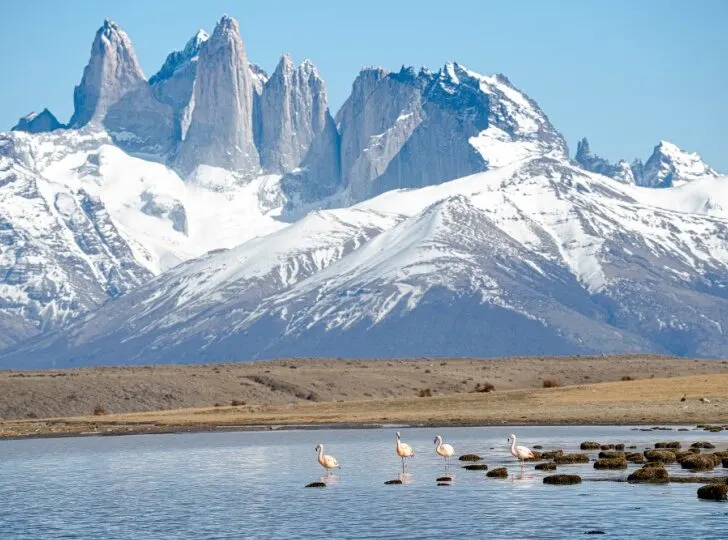
From the Atacama Desert in the north to Patagonia in the south, Chile is one of the safest countries in South America.
Safety in Chile FAQs
Common safety concerns in Chile
While Chile ranks as one of the safest countries in South America, there are still some areas of personal safety that you should consider when visiting to ensure you have a pleasant and positively memorable experience. Here are our many safety tips for visiting Chile.
Planning Your Trip to Chile?
Save time, stress & money with a customized travel itinerary planned for you by a Chile expert
Baggage theft and crime
Increased levels of crime, including muggings and carjackings, are taking place across Santiago and Valparaiso, with the US Government raising their travel advisory for Chile to Level 2: Exercise Increased Caution.
If it’s your first visit to Latin America, I suggest avoiding Valparaiso, which has become increasingly dangerous. When visiting Santiago, it’s essential to stick to central locations such as Downtown, Lastarria, and Bellavista during the day; at night time, Downtown (including the Plaza de Armas and Mercado Central areas), should be completely avoided.
If you’re staying in Lastarria, you must take taxis at night if visiting restaurants outside of the neighborhood.
The eastern edge of Providencia near Los Leones and Tobalaca remains safe during day and night, as does Vitacura and Las Condes. Take care when moving around the city; avoid flashing expensive items, particularly on the street and the metro.
As is always a risk when traveling by plane, having your bags stolen is an unfortunate possibility. To minimize this risk, keep your most important belongings (passport, wallet, money, phone) with you at all times, and secure your luggage with a lock.
Theft is most common in bus stations, and travelers should always keep an eye on their bags until they’ve been securely stowed in the luggage storage beneath the bus. The Estacion Central has also become unsafe and should be avoided completely.
If you’re traveling overnight or with valuable items, keep your rucksack at your feet rather than in the overhead lockers where there’s a chance it might be stolen.
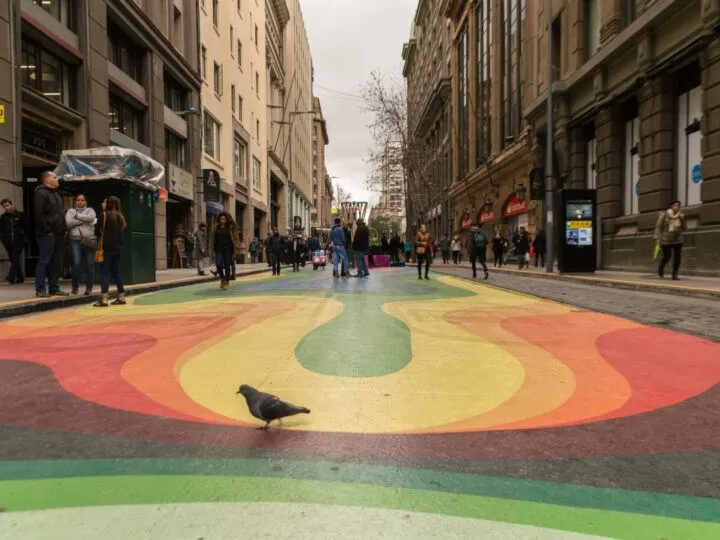
When traveling around Santiago, Valparaíso, and other large cities in Chile, it’s crucial to keep an eye on your belongings as pick-pocketing can be a real issue. Muggings are on the rise in the tourist areas of Bellavista and Lastarria in Santiago. If you are accosted, it’s not worth fighting: give up your belongings.
Be careful with using cell phones at pedestrian crossings and traffic lights, as thieves on scooters have been known to grab devices from unsuspecting pedestrians waiting to cross the street.
You should also not leave them on tables at restaurants, particularly if you’re on an outdoor terrace where distraction techniques can be used to steal them.
It’s also never a great idea to carry lots of cash on your person, particularly in large cities such as Santiago; leave excess amounts in a safe in your hotel (or, in the absence of a safe, split them into small amounts and hidden throughout your luggage).

When eating at restaurants, never allow your credit cards to be taken out of view as card skimming can occur.
Finally, bring a photocopy of your passport in case you lose yours. This is also helpful as Chileans often require your passport number to complete transactions at grocery stores and bus stations, so this prevents you from needing to get your passport out continually.
Protests
Despite Chile’s reputation as one of the safest and most politically stable countries in South America, on Friday the 18th of October 2019, protests erupted in various neighborhoods across the capital city, Santiago.
Following this, they spread to other cities across the country and, on Friday 25th of October 2019, an estimated 1.2 million people marched through Santiago in protest, a number that represents more than 5% of the country’s population.
This was the largest demonstration of its kind since the country returned to democracy following the Pinochet dictatorship of the 70s and 80s.
After the Chilean government agreed to a referendum on the drafting of a new constitution (which passed with a large majority, although the new constitution was ultimately shot down), and following the lockdown measures of the pandemic, protests have largely quietened down in the country.
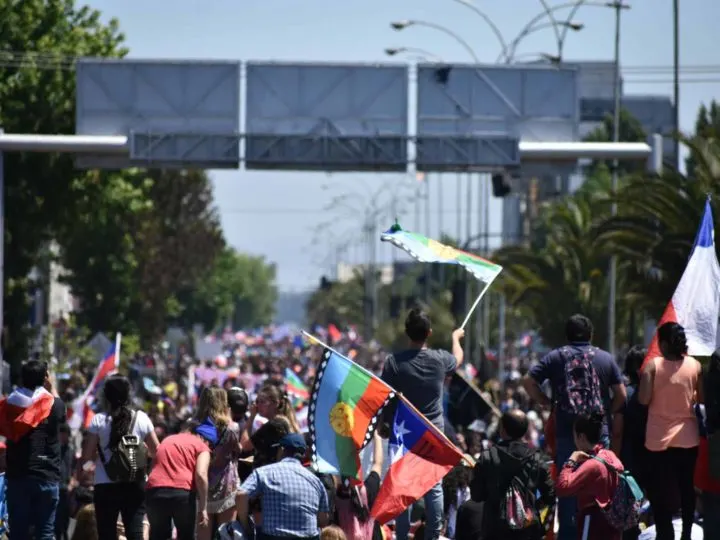
However, peaceful protests in public places in Santiago do occasionally take place. These are sometimes held on Friday afternoons in and around Plaza Italia (now known as Plaza Dignidad) in the center of the city and it’s recommended to avoid these areas when any form of protest is occurring as the police can get heavy-handed with water cannons and tear gas.
Protests also take place in Santiago and other parts of the country every September 11 (the anniversary of the military coup), March 29 (‘Day of the Young Combatant’), and May 1 (Workers’ Day). Protests are also held annually in the week leading up to and on October 18 and 19 to mark the anniversary of the first protests being held.
For up-to-date travel advisories, visit the website of the U.S. Department of State’s Bureau of Consular Affairs if you’re based in the United States or the corresponding body in your home country.
Natural disasters
Chile is along the fault line between the Nazca and South American tectonic plates – the geological force that has raised the Andes mountains to their soaring altitudes.
As a result, Chile has one of the world’s highest incidences of major earthquakes in the world. Tsunamis that follow off-shore earthquakes can be destructive as well. To manage this risk, Chile has one of the most modern and efficient earthquake and tsunami response systems.
Although the occurrence of a significant terremoto (earthquake) is unlikely during your visit, pay attention to advisories in the event of one. The last major earthquakes and tsunamis in Chile were in Valdivia in 1960 and Valparaiso in 2017.
After a tremor, get as far away from coastal areas as possible and quickly leave any older building if you question its structural integrity.
Chile also has several active volcanoes, but most are far from major population centers. Pucón in the Lakes District is next door to Volcán Villarrica, one of the most active volcanoes in South America, with the most recent volcanic eruptions taking place in February 2023.
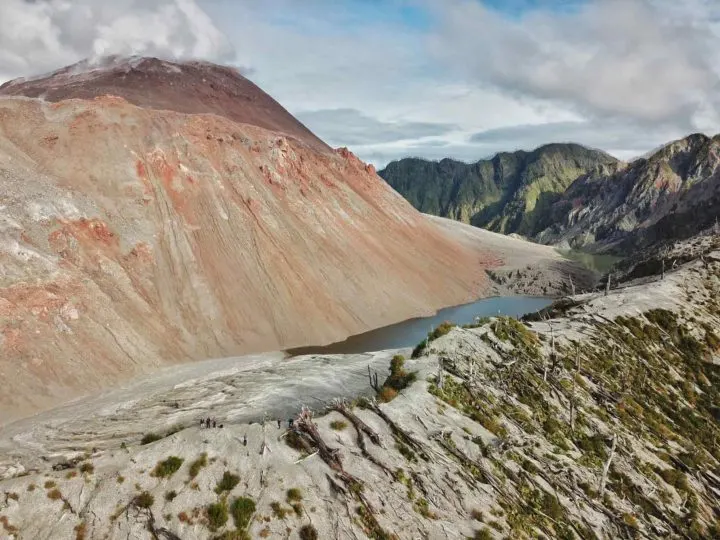
Due to the worsening effects of climate change, wildfires are becoming a more common occurrence around the world. Because of its dry, hot summers, and the high UV index, the forests of Central Chile are prone to outbreaks.
In case of forest fires, make sure to listen to the advice of local authorities, emergency officials, and evacuation orders. If a fire is breaking out, report it to others as soon as possible. Isolate yourself from flammable material as much as possible and douse your surrounding space with water as thoroughly as possible. If in a building, close all doors but keep them unlocked, and stand away from walls.
These are rarely significant enough to require evacuations of the surrounding area, but if visiting the region, it’s essential to follow instructions from the local police in the event of an evacuation.
Safety while hiking and in national parks
Chile’s national parks are often very large areas, so it is important to plan ahead to ensure a safe visit. First, a good old-fashioned paper map is a solid idea in case you find yourself without a signal.
That said, Chile has very good mobile coverage and you will likely be connected unless in the most remote of places. A GPS device is also a good shout for knowing your precise location. Don’t forget to bring an extra battery and a charger if spending extended time off-grid.
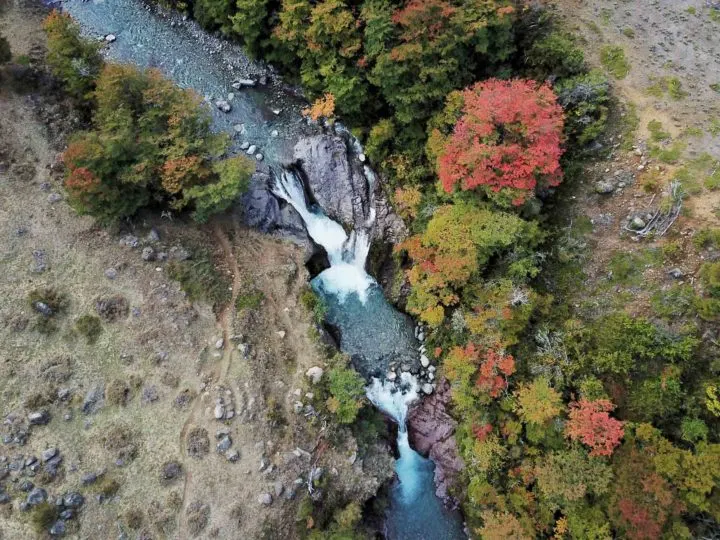
Make sure to bring a comfortable pair of hiking boots that have already been broken in to avoid painful blisters during your trek. Also plan for all possible weather, including waterproof clothing for Los Lagos, Chiloé, and Patagonia.
Layering is important, as there is often a big difference between day and nighttime temperatures. From Central Chile north to the Atacama, sunscreen is essential, as the UV index is quite high.
Although you are unlikely to encounter dangerous wildlife on your trip, travelers should be aware of a few species. Pumas normally avoid humans, but attacks are not unheard of in the mountains and forests. They will generally not attack unless their young are threatened.

The Chilean recluse and black widow spiders are the most dangerous creatures travelers could run into. They generally stay in dark, enclosed areas both indoors and out, so take care not to inadvertently disturb them (and check your shoes before putting them on!).
If bit by either of these, seek immediate medical attention.
Chile has snakes in the wilderness, but none of these pose a serious threat to people as their venom is weak.
Health considerations
Chile is a generally very safe place to visit, however, there are a number of health concerns that you should consider before and during travel.
Covid-19 requirements
There are no longer any Covid-19 requirements for entering Chile.
Traveler’s diarrhea
Traveler’s diarrhea is always a possibility in Chile, but the risk is considered much lower than in the rest of South America.
Traveler’s diarrhea is typically caused by a lack of basic hygiene, with those preparing food not washing their hands properly and so passing infection through food and water.
Raw, undercooked, or unwashed food is a particular risk, and you should be careful with buffets and any food that sits for prolonged periods at lukewarm temperatures (such as street food stalls, where hygiene practices may also leave a lot to be desired).

Tap water is generally safe to drink but consult with your host to confirm, as the high mineral content can cause an upset stomach for visitors. It’s recommended to therefore boil water for one minute, invest in a portable water filter that removes heavy minerals, or stick to bottled water.
In the Atacama Desert, water sources have high levels of arsenic and are therefore not safe for human consumption. If traveling to remote areas anywhere in Chile, it’s also important to stock up on water.
Insect-borne diseases
Unlike in other South American countries, mosquitoes are not a great concern in Chile. Mosquito-borne illnesses are rare, and although an isolated case of the Zika virus was found seven years ago, none have since been reported. No vaccinations are required for visiting Chile, but a tetanus booster is recommended.
Altitude
Some regions of Chile, particularly the Atacama Desert in the north, are at high altitudes.
Visitors may experience soroche (altitude sickness), and it is advised for those who have recently arrived to take a couple of days to acclimate by drinking plenty of water, abstaining from drinking much alcohol, and avoiding overly strenuous activity.
Rabies
Chile’s large stray dog population means that rabies is a real concern. The virus causes inflammation of the spinal cord and the brain and is transmitted through the bites or scratches of infected mammals – usually dogs and cats as well as bats.
Symptoms usually show 20-60 days after exposure and include headaches, fever, and tingling around the wound. By the time symptoms have developed, rabies is fatal.

To avoid contracting the virus, stay away from stray animals, and, if bitten or even scratched, immediately wash the affected area with soap and water and then with an iodine solution or 40-70 percent alcohol. Go directly to a hospital for treatment.
Before travel, a three-dose pre-exposure vaccine can be administered over a period of three to four weeks.
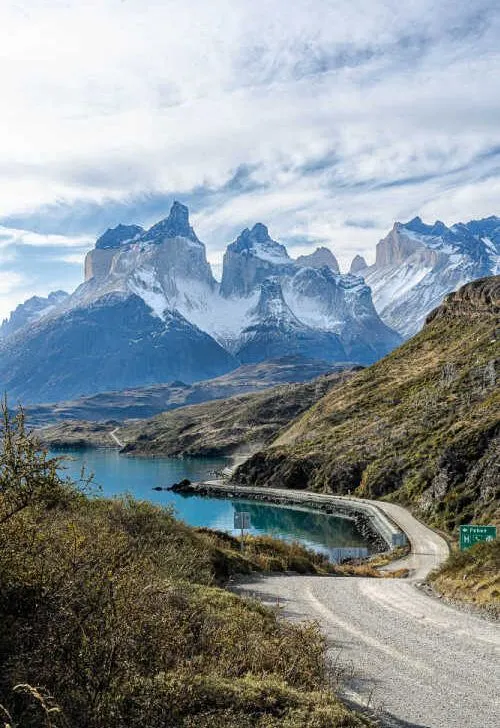
Want a custom-made Chile itinerary, but without the effort of planning it?
Get it planned by an expert (me!) with my travel itinerary planning service; you’ll give me an overview of your ideal once-in-a-lifetime trip to Chile and/or Patagonia, and I’ll put together a custom itinerary just for you using my expert knowledge of the destination.
Alternatively, if you’re looking for a local operator to plan and book your trip, I recommend our trusted partner EcoChile Travel. They design and book tours throughout the country, such as this 12-day highlights of Southern Patagonia itinerary – and offer Worldly Adventurer readers a 5% discount on their services!
Book here to claim your discount.
It means that, if you’re in a remote place without access to medical facilities, the delay it takes for you to receive treatment is less likely to prove fatal.
The safest places to visit in Chile
The key to being safe in Chile is being aware and prepared wherever you go. In the event of sickness or injury, all cities in Chile have high-quality healthcare facilities, however, to avoid excessive fees, it’s essential to purchase travel insurance before you land in the country.
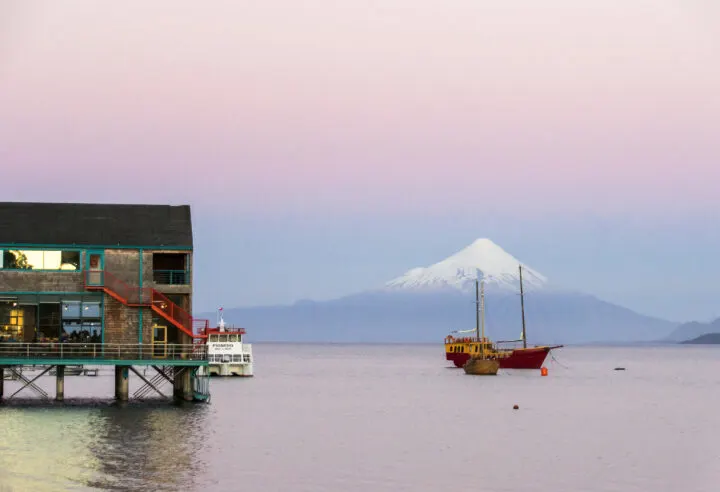
Note that many remote destinations, such as Patagonia, have far smaller hospitals, so if you have a serious accident, you might be flown back to Santiago for further medical treatment.
However, the vast majority of trips to Chile are safe and without issue – and allow the visitors to experience the truly unique terrain that this country has to offer. Wondering where are the safest places to go? Here are our best destinations to consider for your trip.
1. Santiago
To understand the people, heritage, and culture, the capital is the best place to start. This megalopolis, one of the largest cities in South America, showcases a wide variety of neighborhoods containing excellent museums and restaurants, well-manicured parks, and world-famous street art.
2023 safety update: The US State Department has suggested “exercising increased caution” when visiting Santiago. This is due to an increase in muggings, assaults, and carjackings taking place in the city. Unlicensed taxi drivers are an increasing issue, too, particularly at the airport, so it’s recommended to always book through a registered provider (we recommend the reliable, English-speaking My Ride Chile). Previously safe tourist neighborhoods such as Bellavista and around the Plaza de Armas and the Central Market are becoming increasingly unsafe, and you’re best to visit them during the morning as things can take a turn later in the afternoon. It’s advised to take taxis (use Uber where possible or ask your accommodation to call a taxi; never hail a cab off the street) within these areas at nighttime. Read more safety recommendations here.
Remember to keep your valuables safely in your pockets when walking in busy parts of the center, as pickpockets tend to frequent these areas.
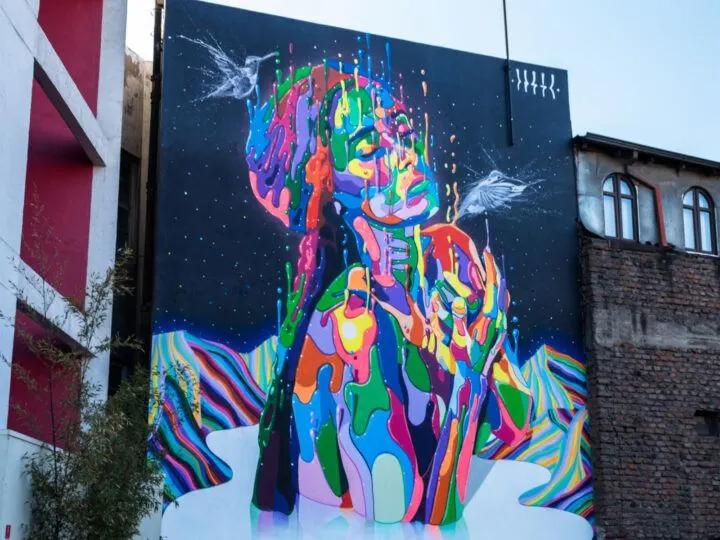
For more on these and more activities in Santiago, check out our guide.
2. Outside Santiago
In day trip range from Santiago are many exciting destinations for all kinds of travelers, including Cajón del Maipo, a canyon in the Andes foothills where visitors can hike and spend a relaxing day outside the city.
Within a couple hours of the city are Chile’s best ski resorts, Farellones, Valle Nevado, and Portillo, which offer a full range of year-round activities. For more ideas, read our guide on day trips from Santiago.
3. Valparaiso and Viña del Mar
On the coast west of Santiago are the coastal cities of Valparaiso and Viña del Mar. The former is famous for its turn-of-the-century art scene, and the latter is the destination of choice for sand and sun.
Unfortunately, Valparaiso is becoming increasingly more dangerous, with reports of tourists being mugged during the day, even in the tourist neighborhoods of Cerro Alegre and Cerro Concepcion.
May 2023 safety update: the city of Valparaíso is becoming increasingly unsafe to visit. Muggings have been reported in the tourist neighborhoods of Cerro Alegre and Cerro Concepcion, even during the day. We recommend avoiding this city until further notice. If you do visit, taking a pre-booked taxi or using Uber is essential if straying from these two neighborhoods during day or night and extreme precautions should be taken when walking around the city. Read more safety information here.
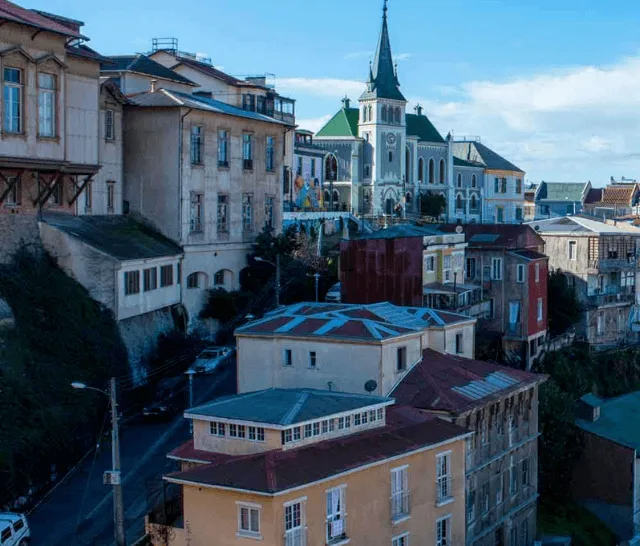
For more, read our guide to Valparaiso.
4. Rapa Nui (Easter Island)
Over 3000 kilometers from the mainland in the South Pacific is the remote island of Rapa Nui (Isla de Pascua in Spanish). Known primarily for its hundreds of giant stone moai, this beautiful, wind-swept island is unlike any other place on Earth.
Although not a budget destination, it is possible to make the trip without spending thousands of dollars. For more information on planning an Easter Island trip, read up on our detailed guide.
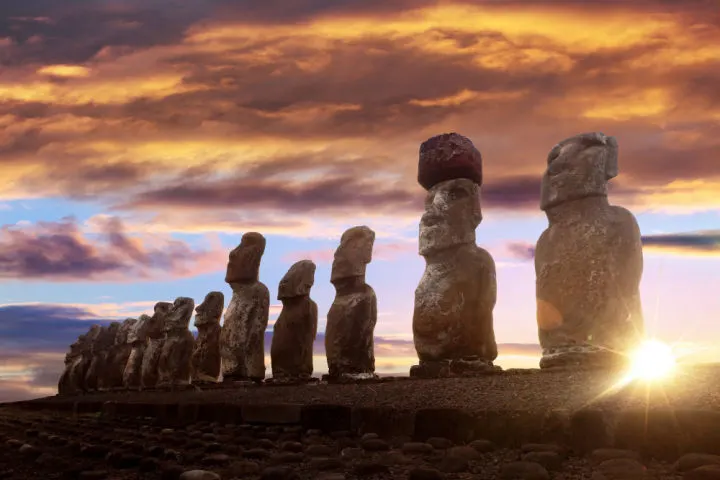
5. Atacama Desert and Northern Chile
The great expanse of Northern Chile is one of South America’s greatest adventures for travelers. The stark landscape of the Atacama Desert offers tourists an unforgettable experience for those seeking isolation and natural spectacle.
Highlights include geysers and hot springs, and incredibly clear night skies, all of which are best approached from San Pedro de Atacama.
This is a great region for renting a 4X4 vehicle for a self-guided tour. Don’t forget to read up on our guides to the Atacama and Northern Chile.
6. Patagonia
At the opposite end of the country in Southern Chile is the harsh and beautiful land of Patagonia. The top draw of the region is Torres del Paine National Park, the mesmerizing glacial peaks that offer some of the most stunning views imaginable.
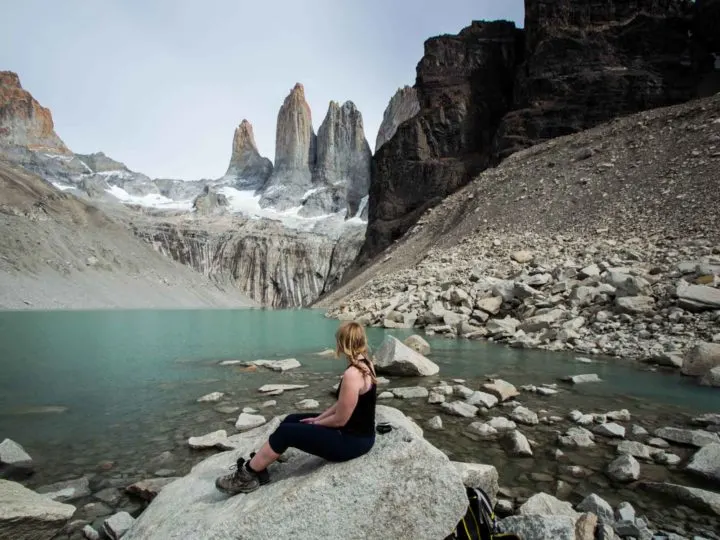
A trip here is incomplete without hiking either the W Trek or lengthier O Circuit. For detailed information on visiting Torres del Paine, take a look at our guide and learn more about visiting Patagonia with our backpacking guides.
7. Puerto Varas and Los Lagos
Between Patagonia and Central Chile is the Lake District: a land packed with beautiful landscapes and outdoor activities. Travelers should take advantage of the opportunities for white-water rafting, boating, mountain biking, or summiting Osorno Volcano.
For more details on Los Lagos and Puerto Varas, read our guide.
8. Chiloé Island
Just southwest of Los Lagos region is the mysterious island of Chiloé. Its isolation from the mainland is apparent in its unique churches built entirely of alerce, a Patagonian cypress, and in its folkloric witchcraft among the native population.

The island and surrounding waters boast an impressive array of flora and fauna, including Humboldt penguins, blue whales, and sea otters.
9. Pucón
Chile’s original adventure sports center, Pucón has a well-earned reputation as a premier outdoors destination. Visitors in winter should take advantage of the chance to ski on an active conical volcano at Villarrica.
Another special activity is to go dog-sledding with the adorable husky team at Aurora Austral.
10. Take a road trip
Because Chile is such a massive country, travelers should consider renting a van and doing a road trip. Rent a van or SUV with Wicked and you’ll be able to pick up and drop off in separate cities.
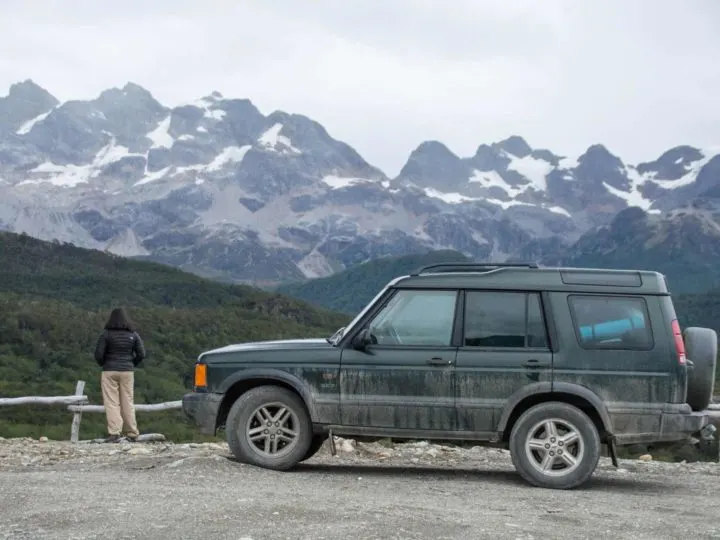
For more inspiration on all things Chile, check out our full array of guides, including this bumper post about my favorite things to do in Chile.
Useful information
The local currency is the Chilean peso (CLP); the current exchange rate is 800 pesos to 1 USD.
Spanish is the official language, and Chile’s dialect has a lot of vocabulary and slang unique to it. English is not widely spoken outside the tourism sector.
Santiago is the transport hub of the country, and because of the great distances between regions, most travelers choose to fly between destinations. LATAM is the flag carrier (and therefore a bit more expensive), while Sky and Jet Smart are budget airlines with the lowest prices.

James
Tuesday 11th of July 2023
There is a HUGE problem with this guide. Time and time again, it's suggested that you take a taxi to avoid being mugged. But it turns out that, at least in Santiago, you will be mugged either way (by the taxi driver instead).
There is a known taxi mafia in Santiago that extorts tourists. They mainly operate around the Costanera Center (Santiago Tower). Why the authorities haven't done anything about this even though they publicly aknowledge the problem I don't know. DO NOT take taxis there and for safety nowhere in Santiago. Get Uber rides instead. YOU WILL BE MUGGED if you take taxis.
I had familly there that took a taxi ride for little more than half a mile and the driver charged them 45 USD for it. Don't make the same mistake.
I kindly ask that Mr. Minser or Worldly Adventurer add this warning to the guide.
Carie
Sunday 21st of January 2024
@Steph Dyson, what have you heard about Uber? Just curious...
Steph Dyson
Tuesday 11th of July 2023
Hi James, I've actually suggested using Cabify or My Ride Chile, not taking a taxi from the street. I've heard really bad things about Uber recently, too, so that's why I no longer recommend it. Steph